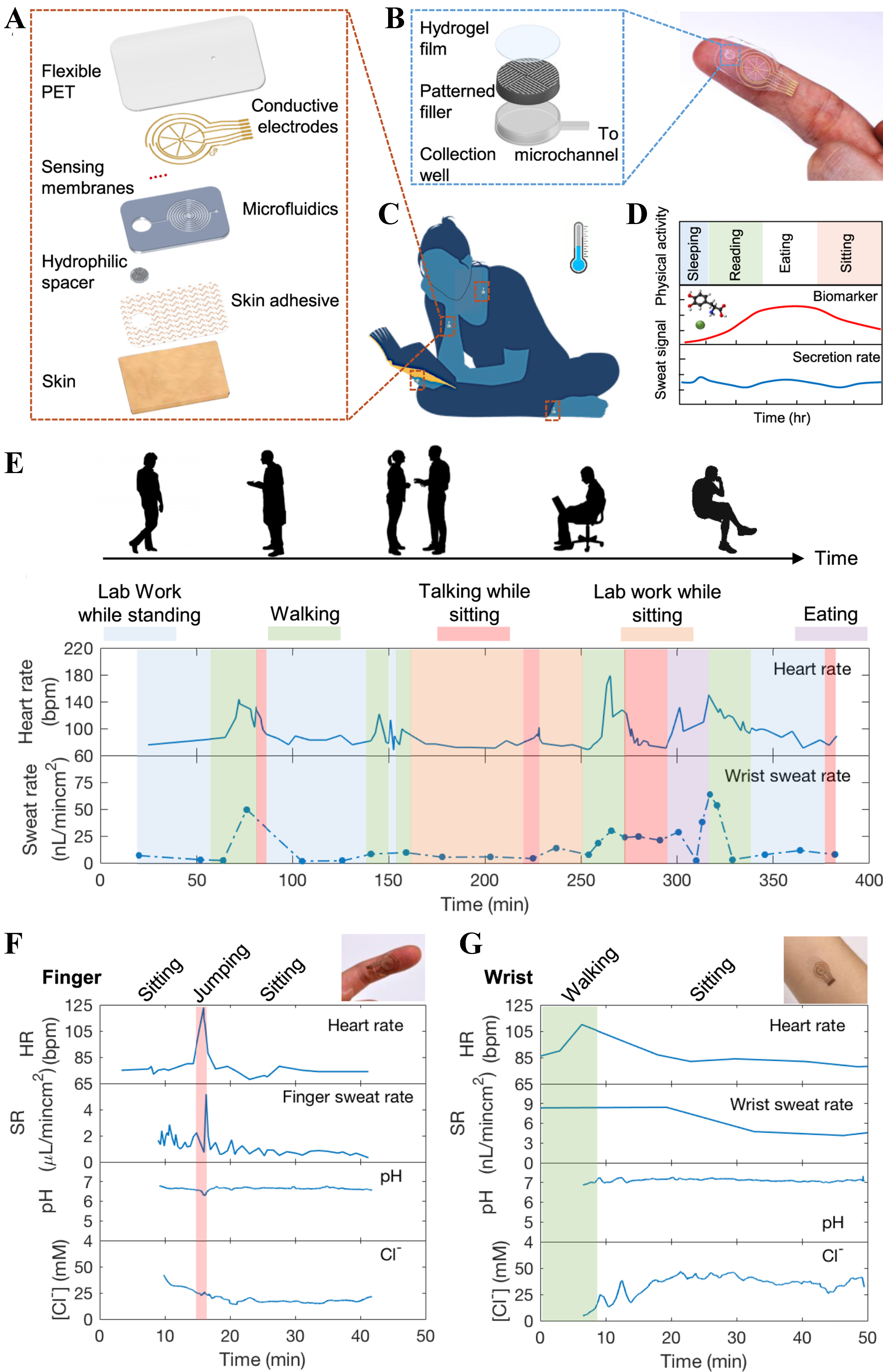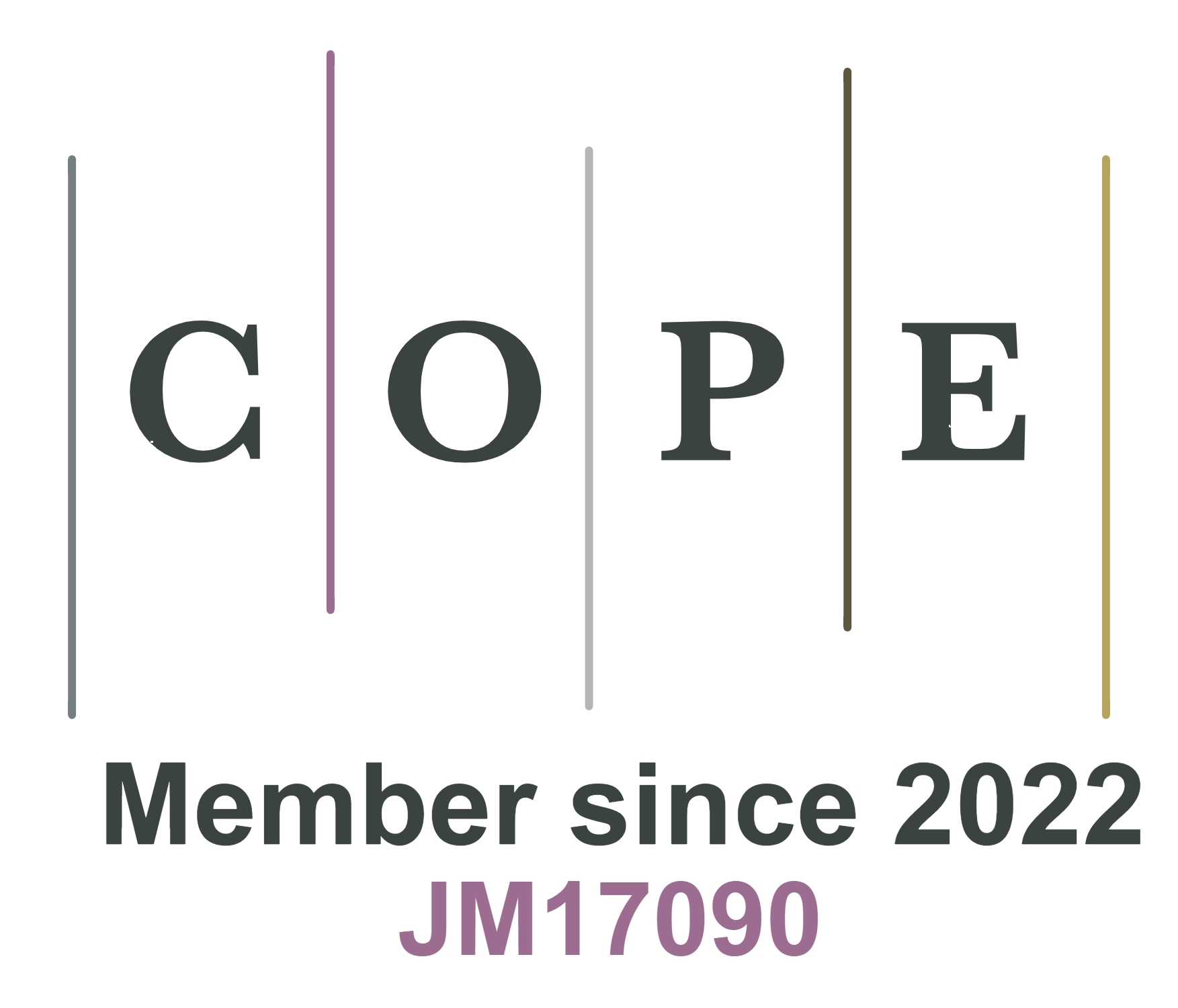fig2
Figure 2. Design and real-time performance monitoring of a wearable microfluidic sweat patch during routine and exercise-related activities. (A) The multilayer patch design comprises a flexible PET substrate with conductive electrodes, sensing membranes, microfluidic channels, hydrophilic filler, and a skin adhesive layer for efficient sweat collection and sensing; (B) The hydrophilic filler structure consisting of a patterned SU-8 mold, PVA film, and hydrogel, facilitating passive sweat uptake into the microchannel by lowering secretion pressure; (C) Optical image of the patch applied to a user’s fingertip and neck; (D) Continuous monitoring of sweat secretion rate and composition for long term without external stimulation; (E) Schematic of long-term biosensing during varied activities such as walking, talking, reading, and eating, illustrating how sweat and biomarker secretion rates vary over time; (F) Continuous monitoring of sweat rate, heart rate, pH, and chloride ion concentration ([Cl]) from the fingertip sensor during various activities; (G) Continuous monitoring of sweat rate, heart rate, pH, and chloride ion concentration ([Cl]) from the wrist sensor. Reprinted with permission from[27], Copyright 2021 Nyein et al. PET: Poly (ethylene terephthalate); PVA: polyvinyl alcohol.











